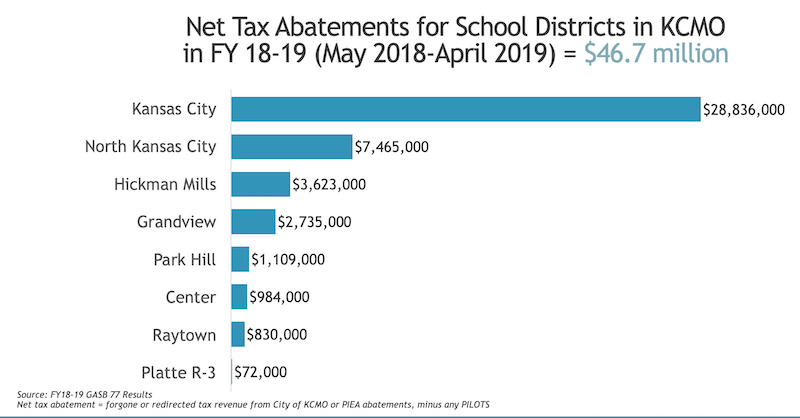Equity Vs ‘Closed for Business,’ City Tax Incentive Debate Continues

Published February 10th, 2021 at 1:15 PM
(Updated Feb. 25, 2021: The City Council approved the changes in tax incentive policy proposed by Councilwomen Robinson and Parks-Shaw. It added exemptions for projects that are located in high-frequency transit corridors; projects that meet the city affordable housing set aside ordinance;
Projects located in severely-distressed Census tracts; projects that generate at least 100 entry-level jobs; projects involving the renovation of historic structures, and industrial manufacturing and distribution projects.)
By Kevin Collison
The City Council is once again considering changes to tax incentive programs that backers say are needed to steer more investment to poorer neighborhoods and opponents fear could stifle development throughout the city.
Councilwomen Melissa Robinson and Ryana Parks-Shaw are pursuing legislation that would reduce the amount and duration of property tax abatements granted eligible developments to 70 percent for 10 years and 30 percent for five years.
“The reason why we’re working on this…is centered around equity,” Robinson told a Council committee last month. “This is driven by the fact that there is inequitable development in our continuously distressed census tracts.
“We wanted to make sure there’s equity as relates to taxing jurisdictions and making sure that we are doing development in a way that doesn’t disproportionately impact students of color.”
The proposal is the latest battle over incentive programs that have been instrumental in helping revitalize downtown and its environs over the past 20 years, but have been less effective attracting investment to the East Side.
The programs also have been strongly criticized by the Kansas City School District, which claims its losing millions of dollars of potential property tax revenues that have not been collected because of the incentives.

Proponents of changing the tax abatement incentive program say the school districts are missing out on millions in potential revenue, a claim disputed by developers and economic development specialists. (Chart prepared for City Council)
A Power Point presentation accompanying the proposed ordinance states the Kansas City School District lost $28.8 million in potential property tax revenues last year, an average of $2,052 per student.
That number is deceiving however, according to development professionals who say the district is essentially counting phantom revenues.
“The taxing jurisdictions contend that they are losing millions of dollars of tax revenues…based on the belief that these projects would have proceeded without the incentives,” said Bob Long, a senior development specialist for the city.
“We go through a rigorous financial analysis process to determine if incentives are needed to make them feasible.”
The Power Point presentation and estimated revenue losses used by Robinson and Parks-Shaw cautions its authors did not consider whether a project would have been built without the incentives or any other benefits a project might have provided.
If approved, the new proposal would be the second time in recent years the city property tax abatement programs have been amended.
In 2016, then Councilman Quinton Lucas was successful in reducing what had been a program that allowed up to 100 percent property tax abatements for 10 years and 50 percent for 15, to 75 percent for 10 years and 37.5 percent for 15.
It also comes on the heels of the Council’s recent approval of another ordinance that requires apartment developers who receive tax incentives to set aside 10 percent of their units as affordable and another 10 percent as “extremely” affordable.
Developers have challenged that change as well, saying the 20 percent set aside, particularly the extremely affordable component, would make projects financially unfeasible.

Supporters of changes to the city tax incentive programs want to encourage more investment on the East Side.
To meet the extremely affordable standard, maximum monthly rents would be $252 for a studio, $302 for a one-bedroom and $317 for a two-bedroom, according to estimates prepared by development attorney David Frantze.
In arriving at his estimates, Frantze included utilities. The new Council ordinance mandates the combined cost of rent and utilities take up no more than 30 percent of the tenants income.
The Council approved the affordable housing ordinance unanimously, but delayed its effective date by 60 days to allow time for further discussions on the extremely affordable requirement.
The property tax abatement ordinance now before the Council does include exemptions for projects meeting the new affordable housing requirement and projects proposed for severely distressed census tracts.
“I feel that it is a great compromise and something we ought to support and get behind,” Robinson told the Council Neighborhood Planning and Development Committee last month.
Developers however, say the combination of the affordable requirement and the proposed reduction in property tax abatements could force them to either pursue projects without incentives–and likely offer no affordable component–or forgo investing in the city altogether.
“If enacted, (the ordinances) will have the net effect of disinvestment…which will result in less economic recruitment, reduced housing opportunities, and reduced jobs for the minority and women owned business community,” Bill Crandall of CBC Real Estate Group wrote the Council.
“It sends a signal to the nation that Kansas City is closed for business.”
Jon Stephens, president and CEO of Port KC, also opposed the proposed changes to the property tax abatement incentives in a letter to the Council.
“I know that ‘incentive reform’ is a tough topic, and one that is commonly misunderstood by the general public,” Stephen said. “That makes your jobs all the more difficult.
“But I would be remiss if I didn’t reach out to state that I believe that the ordinance up for discussion could have real and significant detrimental impact on our ability to attract jobs and growth.”
The proposal also is opposed by the Greater Kansas City Chamber of Commerce.


